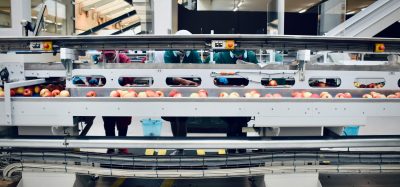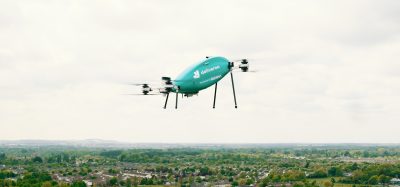Danish Meat Research Institute provides innovative solutions for the global meat industry
- Like
- Digg
- Del
- Tumblr
- VKontakte
- Buffer
- Love This
- Odnoklassniki
- Meneame
- Blogger
- Amazon
- Yahoo Mail
- Gmail
- AOL
- Newsvine
- HackerNews
- Evernote
- MySpace
- Mail.ru
- Viadeo
- Line
- Comments
- Yummly
- SMS
- Viber
- Telegram
- Subscribe
- Skype
- Facebook Messenger
- Kakao
- LiveJournal
- Yammer
- Edgar
- Fintel
- Mix
- Instapaper
- Copy Link
Posted: 12 December 2009 | Lars Hinrichsen, Chief Executive, DMRI | No comments yet
While Denmark is renowned for its high-tech agricultural sector, the Danish Meat Research Institute (DMRI) based in Roskilde provides scientific research and consultancy to make better solutions for tomorrow’s meat industry. Employing a dedicated team of approximately 100 researchers, DMRI develops advanced knowledge on everything from animal welfare before slaughtering to the ideal processes for packaging meat. It puts this knowledge into practice by developing robots and new, safer products to customers in Denmark and further afield. Director Lars Hinrichsen summarises the challenges and opportunities facing the meat sector and shows how DMRI can help the producers tackle those issues.
While Denmark is renowned for its high-tech agricultural sector, the Danish Meat Research Institute (DMRI) based in Roskilde provides scientific research and consultancy to make better solutions for tomorrow's meat industry. Employing a dedicated team of approximately 100 researchers, DMRI develops advanced knowledge on everything from animal welfare before slaughtering to the ideal processes for packaging meat. It puts this knowledge into practice by developing robots and new, safer products to customers in Denmark and further afield. Director Lars Hinrichsen summarises the challenges and opportunities facing the meat sector and shows how DMRI can help the producers tackle those issues.
While Denmark is renowned for its high-tech agricultural sector, the Danish Meat Research Institute (DMRI) based in Roskilde provides scientific research and consultancy to make better solutions for tomorrow’s meat industry. Employing a dedicated team of approximately 100 researchers, DMRI develops advanced knowledge on everything from animal welfare before slaughtering to the ideal processes for packaging meat. It puts this knowledge into practice by developing robots and new, safer products to customers in Denmark and further afield. Director Lars Hinrichsen summarises the challenges and opportunities facing the meat sector and shows how DMRI can help the producers tackle those issues.
Founded in 1954 as a scientific centre to carry out research for the Danish pig producers, DMRI has become an international modern centre of excellence for the meat sector – especially the slaughterhouses and processing plants.
Throughout the decades, DMRI has remained ground-breaking to keep the Danish industry internationally competitive, with great success. For example, the Danish abattoir in Horsens is the most modern plant in the world, equipped with robots made by DMRI. The plant has been producing for four years and is a strong showcase for DMRI. The house of consultancy minds is application driven, having a clear understanding of the fundamental skills needed to turn good science into commercial reality.
Several years ago, DMRI decided that it is nobler in the mind to share Danish meat-producing expertise with other countries than to keep it at home. Today, DMRI has consultancy services in Norway and Sweden, and a unique feature of DMRI’s portfolio is that it covers all the consultancies needed to bring the walking pig from the farm to the final product in the refrigerated display counter.
A major challenge in the meat industry
For decades, pig slaughtering has been industrialised in terms of organisation, work specialisation and use of production lines. Interestingly, Henry Ford got the inspiration to implement car assembly lines from seeing the conveyor systems used by the slaughter industry in Chicago at the beginning of the last century. One could claim that the meat industry is now taking inspiration from the robot assisted and computer controlled manufacturing systems applied in the car industry.
The Danish pig meat industry is very export oriented. Ninety per cent of the production of the big cooperative slaughterhouses is exported to more than 100 countries all over the world. This poses a requirement for the industry to be globally competitive in the sense of quality, product safety and – of course – price.
A big challenge for the industry is therefore to maintain sufficient low unit costs in spite of the high factor costs of Denmark. In particular, the high labour costs must be accompanied by correspondingly high labour productivity. Moreover, it should be emphasised, this high labour productivity must be achieved without compromising the concern for good working conditions for employees. Technology is one of the means to achieve this combination of good working conditions and high labour productivity.
Danish pig slaughter automation program
Good working conditions and high labour productivity were the two main objectives for a large scale slaughterhouse automation program initiated by the Danish pig meat industry approximately 10 years ago. A contributing factor was, and still is, the concern for the ability to attract sufficient labour.
The program is executed by the Danish Meat Research Institute (DMRI) in close cooperation with and directed by the Danish pig meat industry. The DMRI performs the development activities in cooperation with a number of other research organisations, technology providers and machine manufacturers in Denmark and abroad. The program comprises of more than 30 development projects and the total development costs are expected to exceed EUR 40 million. The program is funded by the Danish pig production industry via a pig production levy.
Industry benefits from automation
One of the most important benefits of automation is the improved working environment. Pig slaughtering, cutting and boning is traditionally very labour intensive and requires hard and repetitive work. For many people, a job in a slaughterhouse is therefore not their first choice. This situation can be changed by automation, which will not only reduce arduous and repetitive work but in addition will introduce more motivating jobs, in terms of planning, supervision and control of the new technology.
Automation will also improve hygiene and thereby food safety. This applies in particular to the clean slaughter line where cross contamination between carcasses is reduced because of less manual handling and because the tools in the machines can be sterilised more effectively between each carcass.
Automated processes are more accurate and repetitious than manual work. For some processes, in particular in cutting and boning, this will enhance the product yield.
New technology can also improve the animal welfare. The group-stunning system and mechanised lairage systems (CO2 stunning of pigs in groups) are examples of that. Improved animal welfare has an ethical value in itself and a value in terms of the enhanced meat quality resulting from the more considerate treatment of the animals.
Automation on pig slaughter lines
Ten years ago, only one process, the carcass splitting, was automated. At the start of the automated line, a series of machines will cut the throat, loosen the fat end, divide the hind legs, open the carcass and perform evisceration. In front of the robots is a measuring station for measuring the size of the carcass so the robots can adapt to the variation in carcass size.
The evisceration equipment was developed by the DMRI and introduced a few years ago. The machine cuts the diaphragm, tears off the leaf lards, pre-cuts the tenderloins and loosens the intestinal tract such that the entire set of intestines and organs are removed from the carcass prior to separation. Because the separation takes place outside the carcass, it is performed in a more hygienic manner.
The capacity of the robots is up to 425 carcasses per hour. They can be installed separately or as a line. The robots are supplied by the Danish company SFK and the robots have been installed in a number of slaughterhouses in Denmark as well as abroad.
Two machines for cutting and separation of the pluck sets into the individual organs are also completed. One machine separates the heart plucks into heart, lungs, wind pipe and gullet at a rate of 1500 pluck sets per hour. The other machine separates the liver plucks into liver and diaphragm and it operates at 425 pluck sets per hour.
A number of other machines are being developed and when finished and implemented, the only remaining manual tasks on a clean slaughter line will be the removal of sexual organs, separation of viscera, trichina sampling, freeing ends of tenderloins, final trimming and veterinarian inspection.
Automation of pig carcass cutting
A machine for automatic carcass cutting was developed several years ago by DMRI. The machine separates the half carcass into fore-end, middle and hind leg. The equipment consists of a conveyor, a laying-down station, a measuring station and a sawing station. At the laying-down station, the two half carcasses are positioned horizontally on a conveyor. Simultaneously, the gambrel is removed and the hind feet are sawn off. The conveyor brings the half carcass to the measuring station that determines the position of the cuts. Afterwards, the half carcass is moved to the sawing station and divided into the three primal cuts.
Some years ago, the DMRI completed the development of a machine for automatic cutting of the middle. The machine cuts off the rib tops and separates the loin and the belly.
The economic benefit from use of the machine does not only mean saving labour costs but also added value by enhanced yield because sawing of the rib tops can be more accurate and the division of the loin and the belly can be optimised according to the product specifications.
Automatic boning of fore-ends
A machine for the removal of surface bones from fore-ends was completed some years ago. In the near future, a new machine for the removal of interior bones will enable production of 900 fore-ends per hour as opposed to manual boning which requires approximately 50 persons.
The machine works at a rate of 450 fore-ends per hour and it can be operated by one person. A further two to three operators carry out final trimming of the boned fore-ends.
Very precise and powerful tools make it possible to cut closer and more uniformly to the bones. The machine therefore also enhances the yield compared to manual boning.
Implications for management
Implementation of automation in the pig slaughter industry is not only a technological challenge. It also requires great attention to organisational aspects. The new technology requires changes with respect to tasks, personal skills, management approaches and process control.
The tasks performed will partly change from manual work to control and monitoring of equipment and IT systems. The employees will have to work more independently and take more responsibility. They will be more skilled – in certain aspects even more skilled than their supervisors – and they will expect to have more influence on their work situation.
The supervisors must learn to manage employees with these new expectations and they will have to apply coaching and team building rather that just giving instruction about what to do and how to do it.
So new management approaches such as technology management and change management must be applied efficiently if the economic benefits from the new technology shall provide the maximum return of investment.









